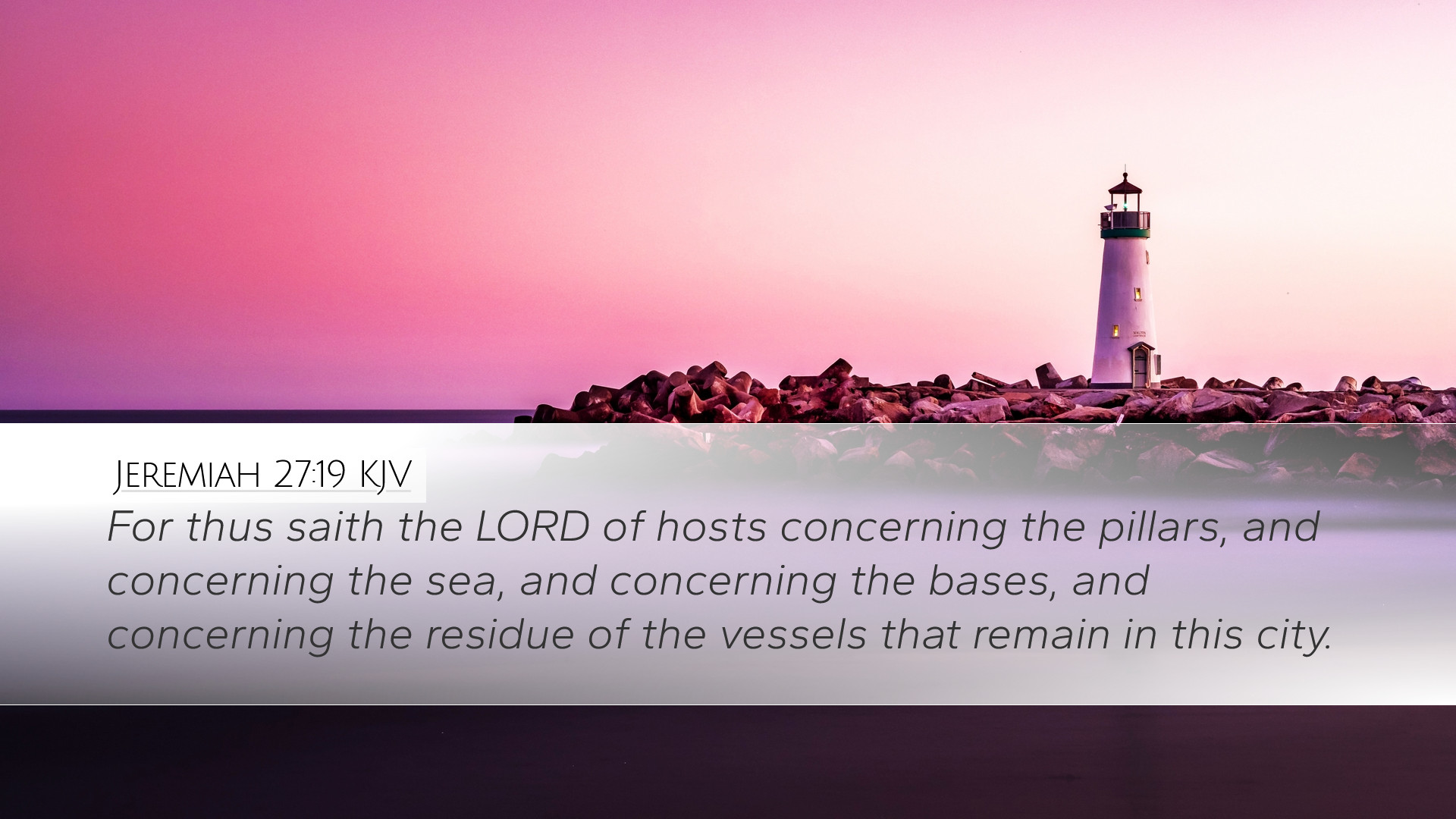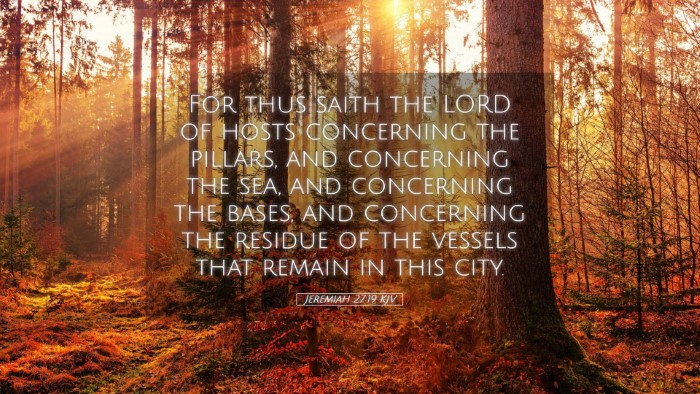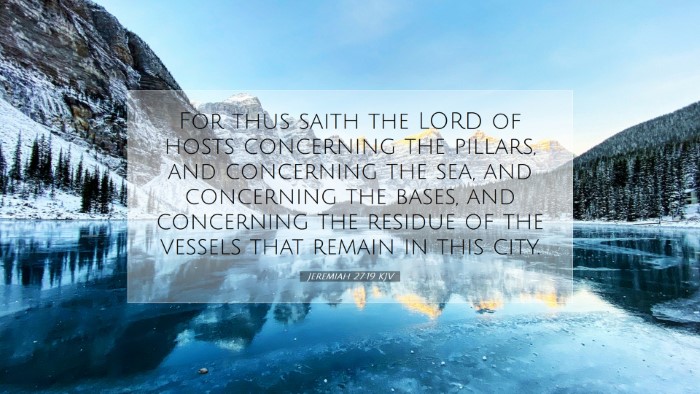Commentary on Jeremiah 27:19
Jeremiah 27:19 states:
"For thus saith the Lord of hosts concerning the pillars and concerning the sea, and concerning the bases, and concerning the remnant of the vessels that remain in this city."
This verse is part of a larger context where the prophet Jeremiah relays God's message to the people of Judah regarding their predicament under siege and the looming Babylonian captivity. The elements mentioned in this verse symbolize the state and future of Jerusalem and its sanctity.
Contextual Analysis
The overarching theme of Jeremiah 27 is God's sovereignty over nations and His control over the fate of Jerusalem. The backdrop of impending Babylonian invasion highlights the necessity of understanding God's purpose in judgment and redemption.
Interpretation of Key Elements
In this verse, several key items are referenced:
- Pillars: These often symbolize strength and stability. In the context of the temple, they remind us of the grandeur of God’s dwelling among His people.
- Sea: This could refer to the large basin used in the temple, symbolizing cleansing or judgment. It represents the divine provision for purification.
- Bases: These are the foundational elements of the temple's construction, signifying permanence and God's enduring presence.
- Remnant of the vessels: The vessels of the temple serve as a link between the worship of God and the civilization itself, hinting at what is preserved even amid destruction.
Theological Implications
This verse sheds light on God's promises and His plans for His people. Despite the exilic situation, God's commitment to His covenant remains steadfast.
Those studying this verse can draw the following theological insights:
- Divine Judgment: God's authority is exercised in determining the fate of nations, including His own people. There is a prophetic warning against disobedience.
- Hope of Restoration: The mention of remnants indicates that while judgment is inevitable, so is future hope. God preserves a remnant for His purposes.
- Symbolism of Worship: The physical items associated with worship remind believers of God’s constant call for holiness and fidelity. They are not merely relics but convey deeper truths about the relationship between God and His people.
Insights from Public Domain Commentaries
Matthew Henry
Matthew Henry highlights that even in times of judgment, God retains authority over His church and people. His commentary explains how the remnants are a reminder of God's mercy. The "sea" and the "pillars" he refers to as symbols of God’s eternal presence amongst His people despite their disobedience and resultant circumstances.
Albert Barnes
Albert Barnes elaborates on the "pillars and sea" as symbols representing things that are significant to Israel’s religious life. He emphasizes that while the physical manifestations may be threatened, God’s purpose will ultimately prevail. Barnes notes that the vessels that remain also symbolize a hope for restoration and the continuation of divine worship, which God has not abandoned despite their impending desolation.
Adam Clarke
Adam Clarke, in his elaboration, connects the description of the pillars, sea, and vessels to the overall theme of judgment leading to eventual restoration. Clarke discusses the importance of these elements not just as physical constructs but as representations of God’s ongoing relationship with His people. He remarks on the tension between judgment and the preservation of some elements of worship, which points toward God's ultimate redemptive plan.
Applications for Pastors and Theologians
For pastors and theologians, Jeremiah 27:19 offers valuable applications:
- Encouragement in Chaos: Even in times of judgment or societal upheaval, reminders of God's presence and purpose (symbolized through the temple items) can provide comfort and hope to believers.
- Lessons on Faithfulness: The implications of judgment underscore the importance of obedience to God's covenant. This can be a vital teaching point for congregations.
- Understanding God’s Nature: The study of this verse encourages deeper theological reflection on God’s holiness, justice, and mercy.
- Hope in Restoration: Pastors can emphasize the theme of restoration that runs through both Jeremiah and the larger narrative of Scripture, culminating in the New Covenant.
Conclusion
Jeremiah 27:19 serves as a profound reminder of God's sovereignty and ongoing relationship with His people. It highlights the significant elements of worship that bear testimony to God's presence, even in the face of judgment. Through the insights gleaned from public domain commentaries, we see a tapestry of warnings and hope, making this verse poignant for today's believers as they navigate their walk with God amidst uncertainties.


